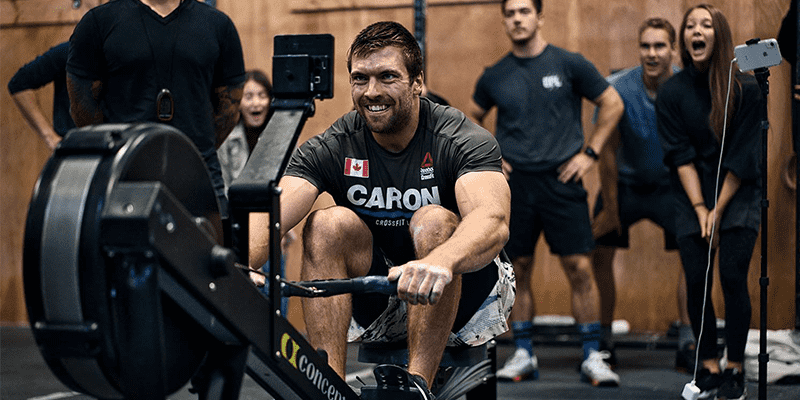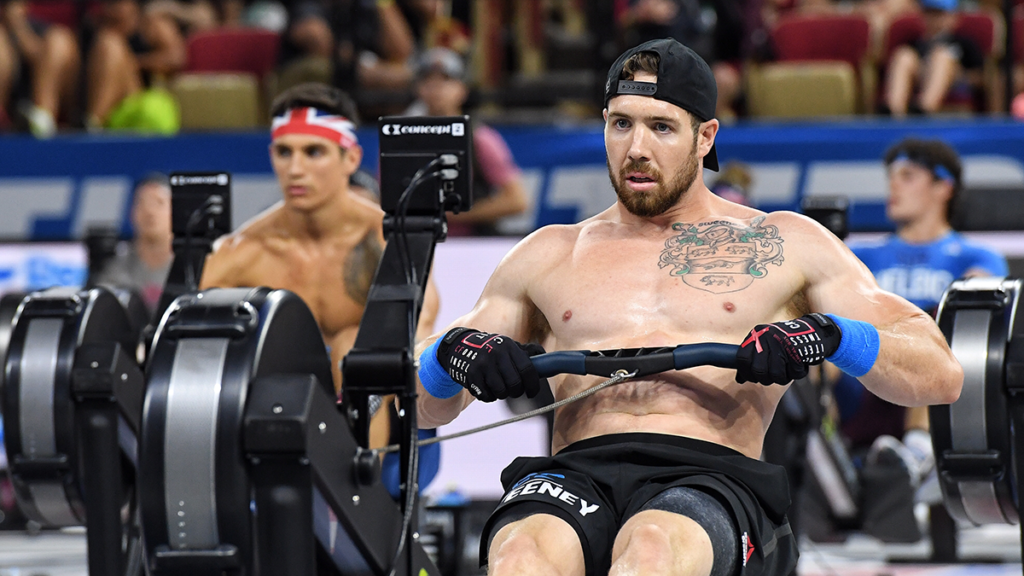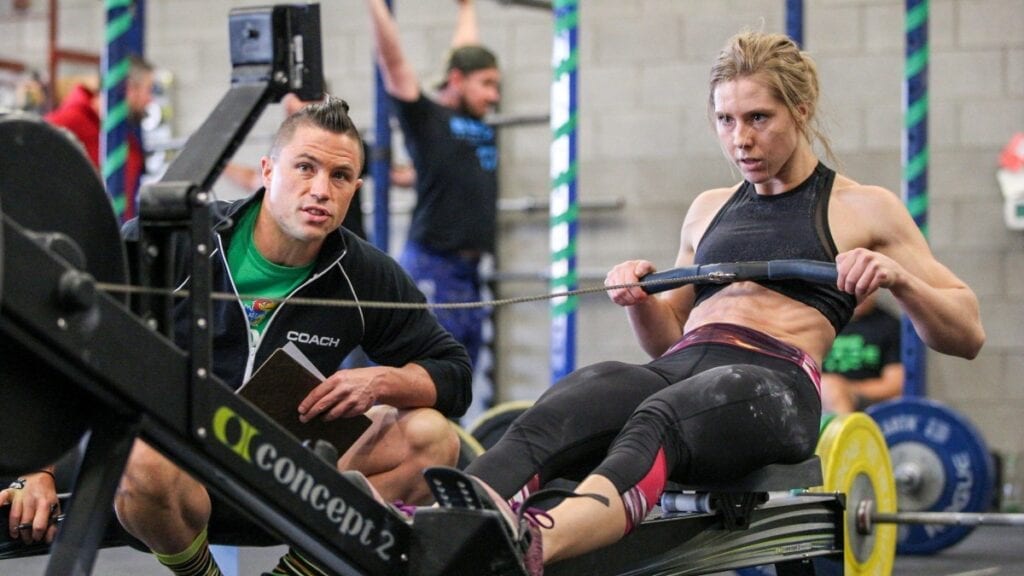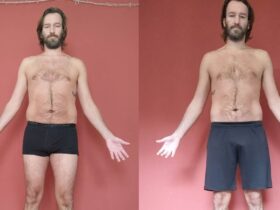What would happen to your body, how much would it change, if you row every day for 30 days? See below for all the info you are searching for.
Rowing every day for 30 days can be a transformative challenge with numerous potential benefits. Firstly, it establishes a consistent fitness routine, fostering discipline and habit formation. The daily commitment helps build momentum, making it more likely to stick with the exercise habit in the long run. Rowing is a full-body workout, engaging multiple muscle groups and promoting overall strength and endurance. Over the course of 30 days, this consistent exercise can lead to noticeable improvements in cardiovascular fitness, muscle tone, and weight management.
Rowing stands out as a low-impact exercise, making it a gentle yet effective option for individuals seeking cardiovascular and strength benefits without subjecting their joints to undue stress. Unlike high-impact exercises like running, where the joints bear the brunt of repetitive pounding, rowing minimizes impact by involving a smooth, gliding motion. The seated position and the fluidity of the rowing stroke contribute to reduced strain on the knees, hips, and ankles.
How to Do HIIT Cardio to Get To 10% Body Fat
The low-impact nature of rowing is particularly beneficial for those with joint issues, arthritis, or individuals recovering from injuries. It allows for a comprehensive workout without exacerbating existing conditions. The rowing machine’s design, with its sliding seat and adjustable resistance, enables users to control the intensity of their workout, accommodating various fitness levels and minimizing the risk of overexertion or injury.
This characteristic makes rowing an inclusive exercise option for people of different ages and fitness backgrounds. Whether you’re a seasoned athlete looking for a joint-friendly cross-training activity or someone beginning their fitness journey, the low-impact nature of rowing makes it an accessible and sustainable choice for promoting overall health and well-being.
Rowing is a fantastic full-body workout that engages multiple muscle groups. The primary muscles worked during rowing include:
- Legs: The quadriceps, hamstrings, and calves are heavily involved in the leg drive, pushing against the foot pedals.
- Back: The latissimus dorsi (lats) muscles in the upper back are key players in the pulling motion.
- Shoulders: The deltoids assist in the arm movement during the rowing stroke.
- Arms: The biceps and triceps are engaged as you pull the handle towards your body.
- Core: The abdominal muscles and lower back muscles are activated to stabilize your body during the rowing motion.
- Glutes: The gluteus maximus is involved in the hip extension during the leg drive.
- Forearms and Grip: Holding onto the rowing handle strengthens the forearm muscles and improves grip strength.
Using a rowing machine offers a plethora of benefits that extend beyond the cardiovascular realm. It seamlessly combines both strength and endurance training, making it a highly efficient full-body workout. The rhythmic motion engages major muscle groups, including legs, back, shoulders, and core, fostering muscular development and toning. What sets rowing apart is its low-impact nature, ensuring minimal stress on the joints compared to high-impact exercises. This makes it an excellent option for individuals with joint concerns or those seeking a workout that is gentle on the body while still delivering substantial results.
The Perfect Workout to Lose Weight
Additionally, rowing promotes cardiovascular health by elevating heart rate and enhancing lung capacity. The continuous, fluid nature of the rowing motion encourages a consistent pace, fostering endurance and stamina. Beyond the physical benefits, rowing also offers a mental boost. The repetitive, meditative nature of the rowing stroke, coupled with the sense of accomplishment as you glide along the resistance, can be a calming and stress-relieving experience. Whether you’re aiming for weight loss, overall fitness, or a dynamic cross-training option, the rowing machine stands as a versatile tool that not only transforms your body but also provides a holistic approach to well-being.
Find out what rowing every day for 30 days can do to your body.
 Source: Courtesy of CrossFit Inc.
Source: Courtesy of CrossFit Inc.Rowing Every Day for 30 Days – What Happens to Your Body?
In the video below, Billy Brendan went from 252 lbs (114.5 kg) to 226 lbs (102.7 kg). In 30 days, he lost 26 pounds (11.8 kg), which is remarkable, to say the least.
As Brendan got increasingly better at rowing, he increased how long he would do the activity. In the first week he did it for 1000 metres. The second week, he increased the length by 500 metres. In the 3rd and 4th week, Brendan rowed for a total of 2000 metres, twice as much as his first week.
He also changed his resting periods during each week, but always taking a break during the halfway point. In the first week, he rested for 1.5 minute, then 2 minutes; in the third week he rested for 2 minutes and the very last one, at his peak, he rested for 1 minute only despite rowing 2 kilometres.
How Long Should You Wait to Train a Muscle Again?
If you would like to take this fitness challenge to another level, you could do like Ben Wise and row every day 5 kilometres, or 5000 metres – which is 5 times more of what Brendan did on his first week.
Ben Wise is the owner of ZOAR Fitness and a coach with a degree in health and physical education. He also does CrossFit since 2017 and made it to Quarterfinals in 2021, 2022 and 2023.
Ben Wise wondered what would happen if he rowed 5k a day for 30 consecutive days. His decision to embark on this exercise experiment was triggered by the delivery of his Concept 2 Rower. Despite considering himself a less-than-great rower, Ben pondered the discrepancy between his rowing and biking performance, contemplating whether his biking prowess stemmed from a well-developed base.
What Happens to Your Body If You Exercise Every Day For 1 Month?
Having a substantial training volume in running, biking, and double unders, Ben decided to shift his focus to increasing his rowing volume rather than aiming for faster times in Met-Cons. The experiment involved committing to rowing 5k daily for 30 days.
 Source: Photo Courtesy of CrossFit Inc
Source: Photo Courtesy of CrossFit IncOn the first day, Ben conducted initial testing and outlined his hypotheses. He predicted marginal improvement in his 5k time trial, enhancements in skill such as timing and coordination, and no significant soreness or fatigue due to increased volume. The primary goal was to improve his ability to clear fatigue in workouts at his “all day” pace.
How to Burn Fat Without Losing Muscle
In the end, these are three things he learned from the experience:
- Ben Wise observed a statistically significant improvement in his Time Trial time. Despite his training age and considerable experience in rowing, Ben realized that 30 days had a more profound impact on his 5k Time Trial than he initially thought. As he foresaw, his rowing sessions seldom reached the usual intensity. A review of his rowing log highlighted that the majority of efforts surpassed his 5k Time Trial pace. Interestingly, perceived efforts at 15-20s/500m above his 5k Time Trial pace remained consistent. However, Ben developed a heightened confidence in sustaining those paces for extended durations without facing mechanical or metabolic breakdown.
- Ben Wise noted improvements in skill, encompassing timing, coordination, and posture. While lacking precise measurements for these changes, he emphasized the often underestimated significance of subjective assessments and soft skills. The perception of effort during a workout, according to Ben, holds equal importance in predicting readiness for training the following day as the actual intensity of the work.
- As anticipated, Ben Wise did not experience soreness from rowing, attributed to the activity’s low eccentric nature. Instead, he observed a discernible increase in fatigue and the demand for recovery after each Time Trial, aligning with his expectations on both Day 1 and Day 30.
He also highlighted the strain on the nervous system from the increased endurance work, questioning conventional beliefs about Central Nervous System fatigue and emphasizing the draining effect of prolonged efforts above the lactic threshold.
In conclusion, Ben Wise’s 30-day rowing experiment provided valuable insights into the interplay of volume, intensity, skill development, and the impact on both fitness and the nervous system.
You can read more about Ben Wise’s experiment in his own website here.
Bodyweight Test to Know How Strong You Are
Source link: https://www.boxrox.com/rowing-every-day-for-30-days-what-happens-to-your-body-new-you/ by Robert Born at www.boxrox.com






